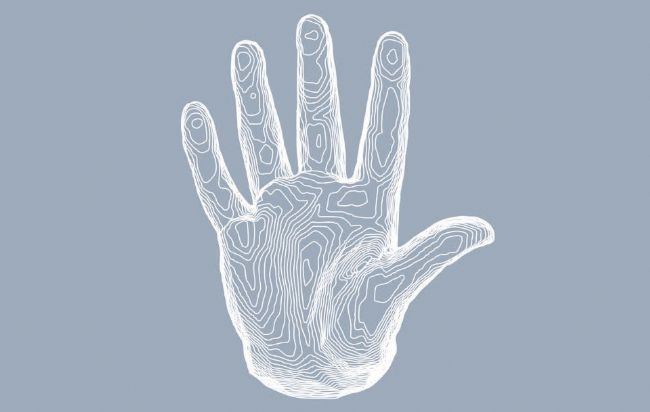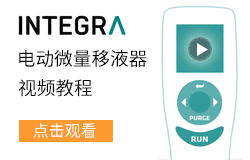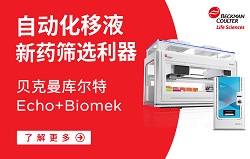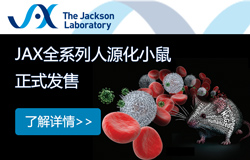使用符合人體工程學的移液器對預防腱鞘炎/CTS/RSI等組織損傷的重要性
Tenosynovitis, CTS and RSI –Medical Background, the Meaning for the Laboratory and Possible Prevention

In a study by Björksten et al. 1994 [1], approximately 60 % of female laboratory technicians who pipetted more than 300 hours per year, reported hand ailments. Buckle and David 1997 [2] reported that approximately 90 % of participants complained of problems in the hand area following continuous pipetting for 60 minutes.
The possible health consequences of such strain in the laboratory are obvious.
Half of all actions in our hand are performed by the thumb. Also during pipetting, it is the main actor among the fingers [3]. In order to move the thumb during pipetting, two antagonistic and two agonistic muscles are required. Static activity of these muscles, where “static” is defined as holding a muscle tone for longer than 4 seconds, can, in combination with an extension of the metacarpophalangeal joint (as is the case when operating the push button of a pipette) increase the risk of suffering tenosynovitis (“tendinitis”) [4].
In their entirety, the carpal joints resemble a convex “roof” which forms a tunnel system for nerves, tendons and tendon sheaths. For this reason, an inflammation of these joints may cause swelling inside the tunnel system, which, in turn, can lead to carpal tunnel syndrome or medianus compression, respectively (ICD-10 Code for CTS:G 56.0) [5]. Tenosynovitis and CTS are only two of the numerous injuries which may be caused long-term by a pathophysiological mechanism for work-induced musculoskeletal disturbances in the lower arm and hand area, the RSIs (Repetitive Strain Injuries) [6]. Besides defined illnesses, several non-specific symptoms may be traced back to this mechanism [6]. Whereas statistics about frequency of disease (prevalence) and number of newly diagnosed cases (incidence) for CTS are accessible through numerous studies, for RSIs (Repetitive Strain Injuries) they barely exist or show large variations between different studies. For example, the prevalence varies between 3.6 and 40 %. One reason for this variability is that RSIs are inherently difficult to diagnose; RSI only describes a mechanism, a situation, not a disease. As such, the type and intensity of the typical complaint do not automatical- ly indicate a uniform cause. More likely, several causes may synergize. Therefore, RSI becomes a collective term. Generally, repetitive physical strain in combination with sub-optimal joint positions and insufficient healing time are considered causal [6]. The connection between the repeti- tive movements and the typical complaints of RSI has been demonstrated in numerous studies from both epidemiolog- ical and mechano-biological perspectives. This was also demonstrated in animal studies, where repetitive move- ments led to micro-lesions in actively as well as passively moved joints. The generation of RSIs is explained by two different models. The regeneration of tissue following the strain mentioned above takes days to weeks. However, the intermission between activities which cause this strain, is measured in hours. The accumulation of these micro- lesions leads to more serious, irreparable damage, which is then perceived as pain or discomfort. This somatic model is applicable to nerves, tendons, joints and connective tissue. Approximately 90 % of affected persons, however, do not show a uniform diagnostic picture.
Half of all actions in our hand are performed by the thumb. Also during pipetting, it is the main actor among the fingers [3]. In order to move the thumb during pipetting, two antagonistic and two agonistic muscles are required. Static activity of these muscles, where “static” is defined as holding a muscle tone for longer than 4 seconds, can, in combination with an extension of the metacarpophalangeal joint (as is the case when operating the push button of a pipette) increase the risk of suffering tenosynovitis (“tendinitis”) [4].
In their entirety, the carpal joints resemble a convex “roof” which forms a tunnel system for nerves, tendons and tendon sheaths. For this reason, an inflammation of these joints may cause swelling inside the tunnel system, which, in turn, can lead to carpal tunnel syndrome or medianus compression, respectively (ICD-10 Code for CTS:G 56.0) [5]. Tenosynovitis and CTS are only two of the numerous injuries which may be caused long-term by a pathophysiological mechanism for work-induced musculoskeletal disturbances in the lower arm and hand area, the RSIs (Repetitive Strain Injuries) [6]. Besides defined illnesses, several non-specific symptoms may be traced back to this mechanism [6]. Whereas statistics about frequency of disease (prevalence) and number of newly diagnosed cases (incidence) for CTS are accessible through numerous studies, for RSIs (Repetitive Strain Injuries) they barely exist or show large variations between different studies. For example, the prevalence varies between 3.6 and 40 %. One reason for this variability is that RSIs are inherently difficult to diagnose; RSI only describes a mechanism, a situation, not a disease. As such, the type and intensity of the typical complaint do not automatical- ly indicate a uniform cause. More likely, several causes may synergize. Therefore, RSI becomes a collective term. Generally, repetitive physical strain in combination with sub-optimal joint positions and insufficient healing time are considered causal [6]. The connection between the repeti- tive movements and the typical complaints of RSI has been demonstrated in numerous studies from both epidemiolog- ical and mechano-biological perspectives. This was also demonstrated in animal studies, where repetitive move- ments led to micro-lesions in actively as well as passively moved joints. The generation of RSIs is explained by two different models. The regeneration of tissue following the strain mentioned above takes days to weeks. However, the intermission between activities which cause this strain, is measured in hours. The accumulation of these micro- lesions leads to more serious, irreparable damage, which is then perceived as pain or discomfort. This somatic model is applicable to nerves, tendons, joints and connective tissue. Approximately 90 % of affected persons, however, do not show a uniform diagnostic picture.
According to the neuroplastic model, the tissue lesions may heal during a longer pause from the repetitive task (so that those affected are free of discomfort), but nevertheless recur a few hours following the re-establishment of these repetitive tasks. The premise of this model is that the brain may associate these tasks, or the micro-lesions associated with these tasks, with the perception of strain and pain via a neurological pathway (nociceptive learning). Initially, this pain may be below the pain threshold (imperceptible), so that it is not perceived as such.
Pathologically, the development of RSIs can be divided into three phases [6]. In the early phase, discomfort is perceived at the end of the work day and is no longer perceptible the following day [6]. The medium-term phase is characterized by the perception of discomfort during the actual task, following months and years of continuous strain. These complaints persist until the end of the day, and they diminish during the period of rest during the night [6]. It is during this phase that connections are perceived between the problem and the task [6]. Often, a classic disease is diagnosed (e.g. tendomyalgias) [6]. Finally, after years, and during the phase of severe RSIs, even slightly repetitive movements will cause pain [6].
Pathologically, the development of RSIs can be divided into three phases [6]. In the early phase, discomfort is perceived at the end of the work day and is no longer perceptible the following day [6]. The medium-term phase is characterized by the perception of discomfort during the actual task, following months and years of continuous strain. These complaints persist until the end of the day, and they diminish during the period of rest during the night [6]. It is during this phase that connections are perceived between the problem and the task [6]. Often, a classic disease is diagnosed (e.g. tendomyalgias) [6]. Finally, after years, and during the phase of severe RSIs, even slightly repetitive movements will cause pain [6].
Generally, a change in behavior and work habits is the obvious therapy for RSIs [6]. While different medical therapies and surgical interventions may cure the symptoms temporarily, a recurrence is probable in the absence of behavioral changes [6]. Besides behavioral changes, a change in conditions by means of appropriate re-organization of the work area, under consideration of a holistic ergonomic approach, is essential for the effective reduction of the risk for RSIs. Two advantages emerge from this re-organization; it reduces musculoskeletal cumulative strain, and simultaneously it necessitates a change in the flow of movements, which supports the anti-nociceptive learning process [6].
The work tools used play an important role in the reduction of persistent discomfort caused by RSIs. Those instruments and devices which lead to unfavorable joint positions and therefore cause or support unfavorable body positioning, should be removed [6].
With regard to daily life in the laboratory, one should consider relegating pipettes which are frequently used but which do not conform to current ergonomic standards to special, less frequent tasks. For daily and frequent pipet- ting, ergonomic pipettes should be used. Finally, a plan should be devised for frequent changes throughout highly repetitive tasks.
The work tools used play an important role in the reduction of persistent discomfort caused by RSIs. Those instruments and devices which lead to unfavorable joint positions and therefore cause or support unfavorable body positioning, should be removed [6].
With regard to daily life in the laboratory, one should consider relegating pipettes which are frequently used but which do not conform to current ergonomic standards to special, less frequent tasks. For daily and frequent pipet- ting, ergonomic pipettes should be used. Finally, a plan should be devised for frequent changes throughout highly repetitive tasks.
With all of these measures, it should be taken into account that the efficiency, or the speed of work, respectively, could drop initially, before they reach their previously established level again. However, in the long term, the optimized switch in strain-inducing types of work is expected to lead to an increase in activity.
Besides the design of the work tools, the design of the entire work area may have a positive impact on the reduction of ailments due to RSIs. For example, devices which intrude on the individual comfort zone may be moved [6].
An additional advantage of moving the devices to a more remote location is the fact that natural walking breaks from the repetitive task becomes necessary when these devices are used [6]. Furthermore, it is essential that unfavorable body positions (e.g. arm positioning during pipetting) are to be avoided. But even a simple change in activity (i.e. strain) may contribute to the reduction of ailments due to RSIs. Along those lines, highly repetitive tasks should be interspersed with tasks which give the highly strained or even injured areas of the body a break from such strain [6].
In order to prevent RSIs, only a few measures will suffice which are easily integrated into the daily work routine. As a first step, all positions and angles during the work flow are to be examined critically. For example, a pipette should always be held in a vertical position during pipetting in or- der to reduce the static work required by the hand and arm for holding the pipette. This not only prevents possible RSIs, but at the same time the accuracy and precision during pipetting is increased. If the pipette is held at an angle, the pressure conditions above the liquid will differ from those present during vertical positioning. As a result, the aspirated or dispensed volume, respectively, changes.
Besides the design of the work tools, the design of the entire work area may have a positive impact on the reduction of ailments due to RSIs. For example, devices which intrude on the individual comfort zone may be moved [6].
An additional advantage of moving the devices to a more remote location is the fact that natural walking breaks from the repetitive task becomes necessary when these devices are used [6]. Furthermore, it is essential that unfavorable body positions (e.g. arm positioning during pipetting) are to be avoided. But even a simple change in activity (i.e. strain) may contribute to the reduction of ailments due to RSIs. Along those lines, highly repetitive tasks should be interspersed with tasks which give the highly strained or even injured areas of the body a break from such strain [6].
In order to prevent RSIs, only a few measures will suffice which are easily integrated into the daily work routine. As a first step, all positions and angles during the work flow are to be examined critically. For example, a pipette should always be held in a vertical position during pipetting in or- der to reduce the static work required by the hand and arm for holding the pipette. This not only prevents possible RSIs, but at the same time the accuracy and precision during pipetting is increased. If the pipette is held at an angle, the pressure conditions above the liquid will differ from those present during vertical positioning. As a result, the aspirated or dispensed volume, respectively, changes.
In the angled position, a larger volume than intended is dispensed (0.5 - 1 % difference from the reference volume). All pipettes are adjusted to vertical pipetting. It is further important to register smallest indications of discomfort during certain positions or movements as soon as they are perceived repeatedly or they are associated with a repetitive task. One must remember that RSIs stem from accumulation of barely perceptible micro-lesions. By the time distinct pain is felt, it is too late in most cases.Discomfort of all types should be avoided as soon as possible after it is noticed.
In general, humans tend to apply more force than actually necessary. This is one type of physical strain with which the human burdens himself unnecessarily.
In combination with the wrong angles and positions, this strain may lead to RSIs during repetitive work. In this context, the most commonly reported mistakes during the daily laboratory routine are “rocking” (repeated hitting of the pipette cone onto a tip rack in order to affix the tip to the cone), as well as too tight or cramped a grip of the pipette In both cases, the manufacturer can make a contribution to the prevention of these mistakes: for example, a spring built into the cone renders rocking ineffective and spares the joints if the user rocks anyway. At the same time, this mechanism lowers the systemic measurement error, since the spring loaded cone supports homogeneous tip fitting onto the cone at all times, thus ensuring that pressure conditions inside the pipette are always the same.
Especially since repetitive tasks cannot always be avoided, it is important to take regular breaks and pay attention to favorable climatic conditions at the same time. For the fine motor movements during pipetting it is imperative that fin- gers are warm for pipetting, and for work in general.
However, all recommendations listed above can only de- velop their effectiveness if practiced in combination with ergonomic instruments and devices.
Especially since repetitive tasks cannot always be avoided, it is important to take regular breaks and pay attention to favorable climatic conditions at the same time. For the fine motor movements during pipetting it is imperative that fin- gers are warm for pipetting, and for work in general.
However, all recommendations listed above can only de- velop their effectiveness if practiced in combination with ergonomic instruments and devices.
Literature
[1]Björksten MG, Almby B, Jansson ES, 1994: Hand and shoulder ailments, Applied Ergonomics, 25. Jg. (2), S. 88-94.
[2]David G, Buckle P, 1997: A questionnaire survey of the ergonomic problems associated with pipettes and their usage with specific reference to work-related upper limb disorders, Applied Ergonomics 28. Jg. (4), S. 257-262.
[3]Wood, D.D., Andres, R.O., Laurie, N.E., 1997. Micropipettes: an ergonomic product evaluation.
In: Das B., Karwowski, W. (Eds.), Advances in Occupational Ergonomics and Safety II. IOS Press and Ohmsha USA, pp. 165–168.
[4]Asundi KR, Bach JM, Rempel DM, 2005: Thumb force and muscle loads are influenced by the design of a mechanical pipette and by pipetting tasks, Human Factors, 47. Jg. (1), S. 67-76
Your local distributor: www.eppendorf.com/contact
Eppendorf AG · 22331 Hamburg · Germany E-mail: eppendorf@eppendorf.com
www.eppendorf.com/physiocare
Eppendorf®, the Eppendorf Brand Design and Eppendorf PhysioCare Concept® are registered trademarks of Eppendorf AG, Germany. All rights reserved, including graphics and images. Copyright © 2017 by Eppendorf AG.
Copyright(C) 1998-2025 生物器材網 電話:021-64166852;13621656896 E-mail:info@bio-equip.com





